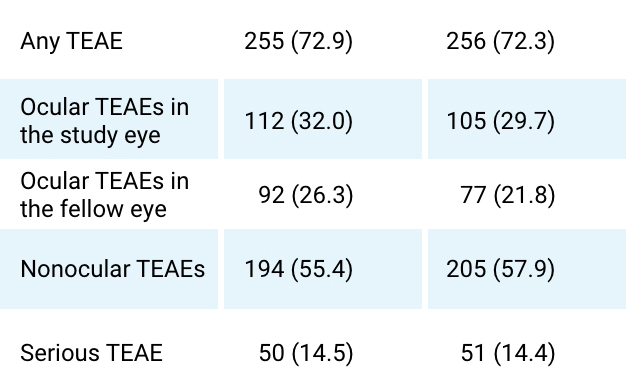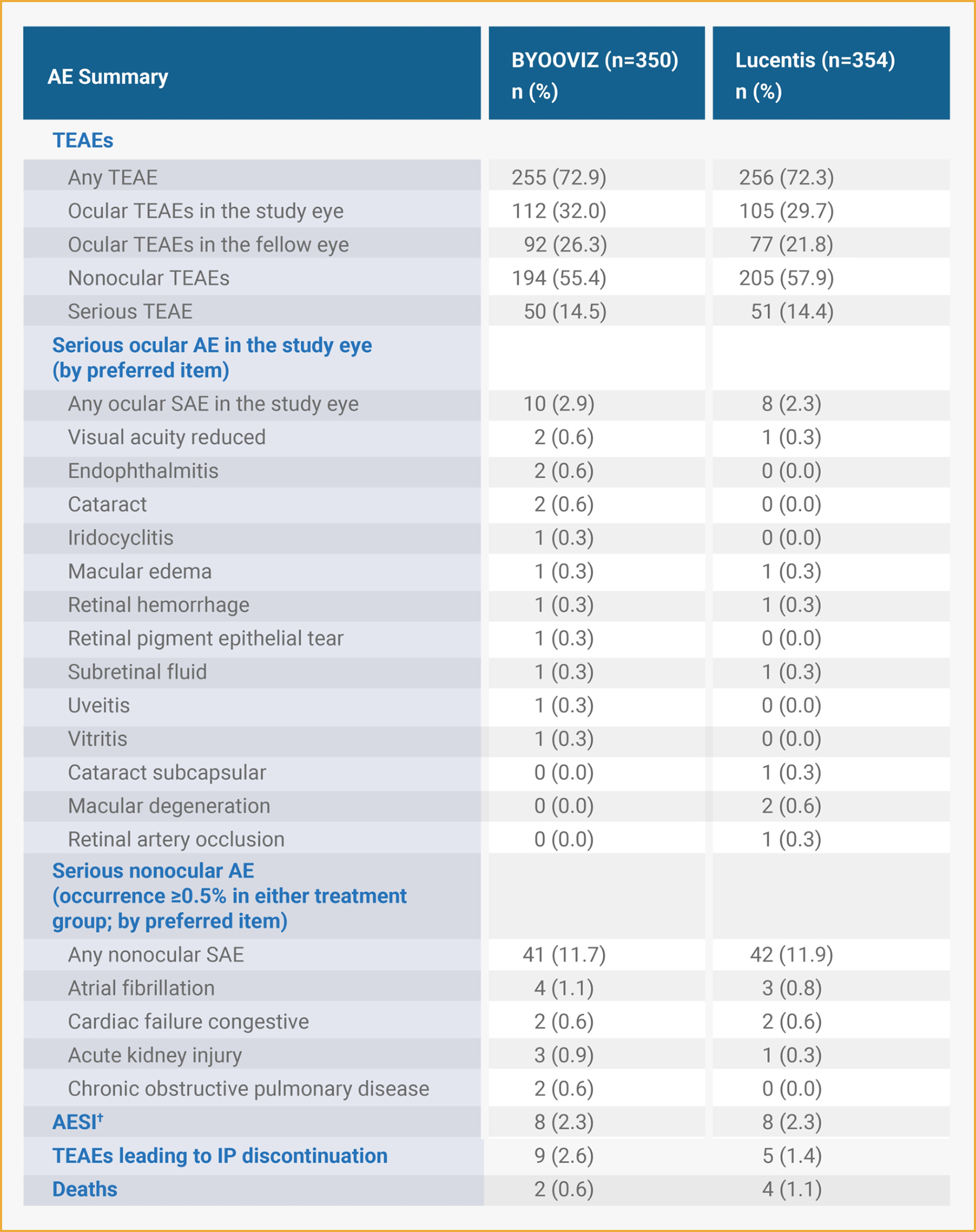Summary of All Adverse Events up to Week 52
(Safety Set)2*
AE Summary
BYOOVIZ (n=350) n (%)
Lucentis (n=354) n (%)
TEAEs

Serious ocular AE in the study eye (by preferred item)

Serious nonocular AE (occurrence ≥0.5% in either treatment group; by preferred item)

AESI†

TEAEs leading to IP discontinuation

Deaths


- Adapted from Bressler NM, et al., 2021.
- Percentages are based on the number of participants in the safety set.
- *
- Included participants receiving at least one dose during the study period after randomization.
- †
- The most frequently reported adverse events of special interest were intraocular pressure increase (BYOOVIZ: 0.3%, n=1; Lucentis: 1.7%, n=6) and iridocyclitis (BYOOVIZ: 0.9%, n=3; Lucentis: 0%, n=0).
Additional safety, immunogenicity, and pharmacokinetic‡ (PK) outcomes were comparable between treatment groups1 up to Week 52 of treatment2
- ‡
- PK data were obtained in 54 patients and have limitations in their interpretation. Absorption of intravitreal injection anti-VEGF product into systemic circulation is very limited.
- AE=adverse event; AESI=adverse event of special interest; SAE=serious adverse event; TEAE=treatment-emergent adverse event; VEGF=vascular endothelial growth factor.